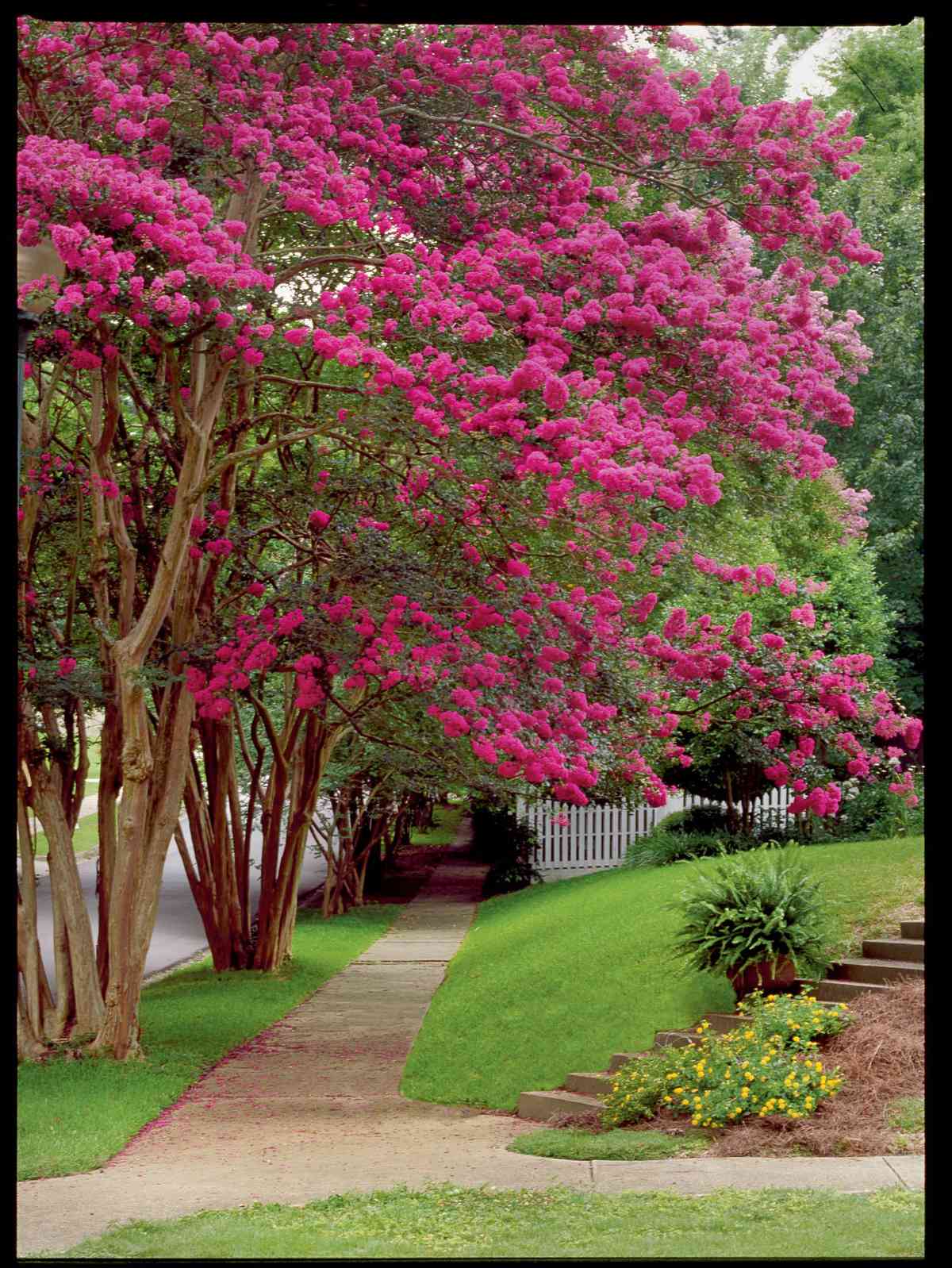
Beginner's Guide to Crepe Myrtle Care Southern Living
Crape myrtles are large shrubs or small trees with multiple stems and a rounded, bushy crown. Large flower clusters that bloom during summer are the plant's most outstanding feature. Crape myrtles have smooth peeling bark in a range of colors including, gray, cinnamon, light tan, and soft pink.
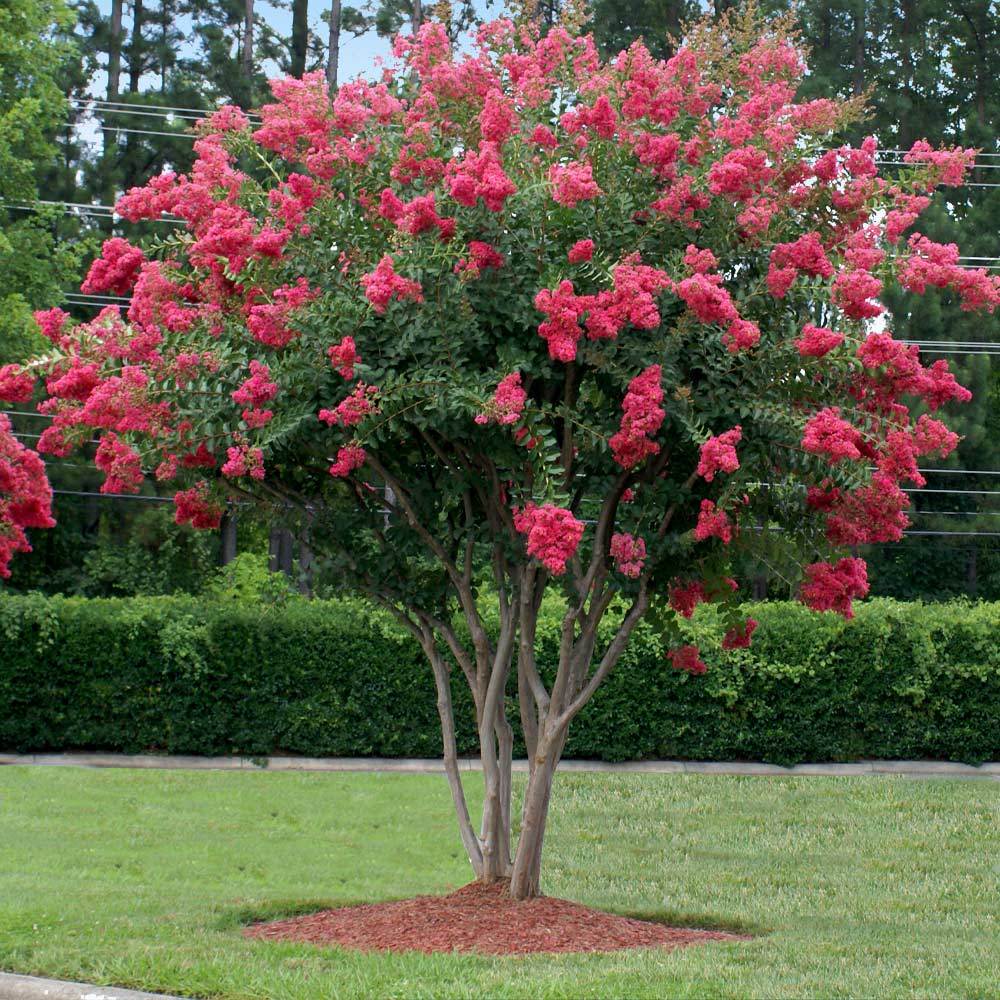
Tuscarora Crepe Myrtle LA Landscape Supply
Crepe myrtle, though often listed as a shrub, is not really a shrub or low-growing tree. Be prepared for it to grow up to 25-30 ft. tall. Sometimes owners of crepe myrtles who want them to stay shrub-sized will cut the main central branch (i.e., top it),which permanently ruins their growth structure and can make them extremely unsightly and sickly in the long run.

Red Crape Myrtle Tree Green Thumbs Garden
Plant crape myrtle in full sun and well-drained loamy, clay soil. Choose a location with good air circulation to help prevent powdery mildew and other diseases. A crape myrtle planted in partial shade or full shade will experience reduced flowering. Water plants deeply during the first growing season to establish an extensive root system.
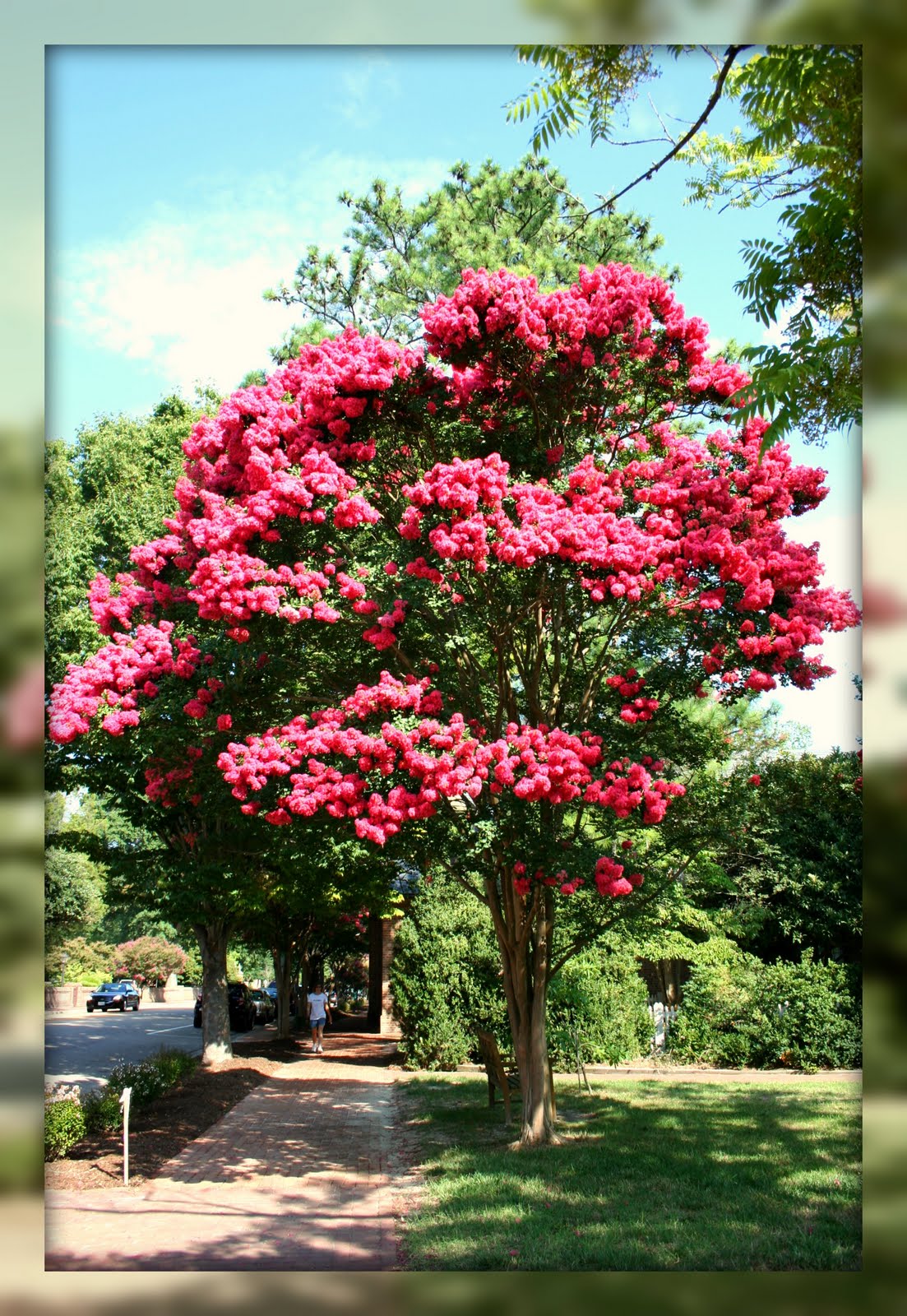
Living In Williamsburg, Virginia Crepe Myrtle Trees In Bloom, Williamsburg, Virginia
Crape Myrtles are mainly deciduous shrubs and trees. They come in a wide variety of colors including white, red, pink, lavender, and purple. There are about 50 species of these plants, that range in size from less than 10' tall for dwarf varieties, to over 40' tall for some larger species.

Purple Tower Crape Myrtle Monrovia Purple Tower Crape Myrtle Purple plants, Myrtle tree
Crepe myrtles—also known as crape myrtles and crapemyrtles—boast year-round appeal, but in the heat of summer they show their true colors, from red and pink to lavender, purple, and white.
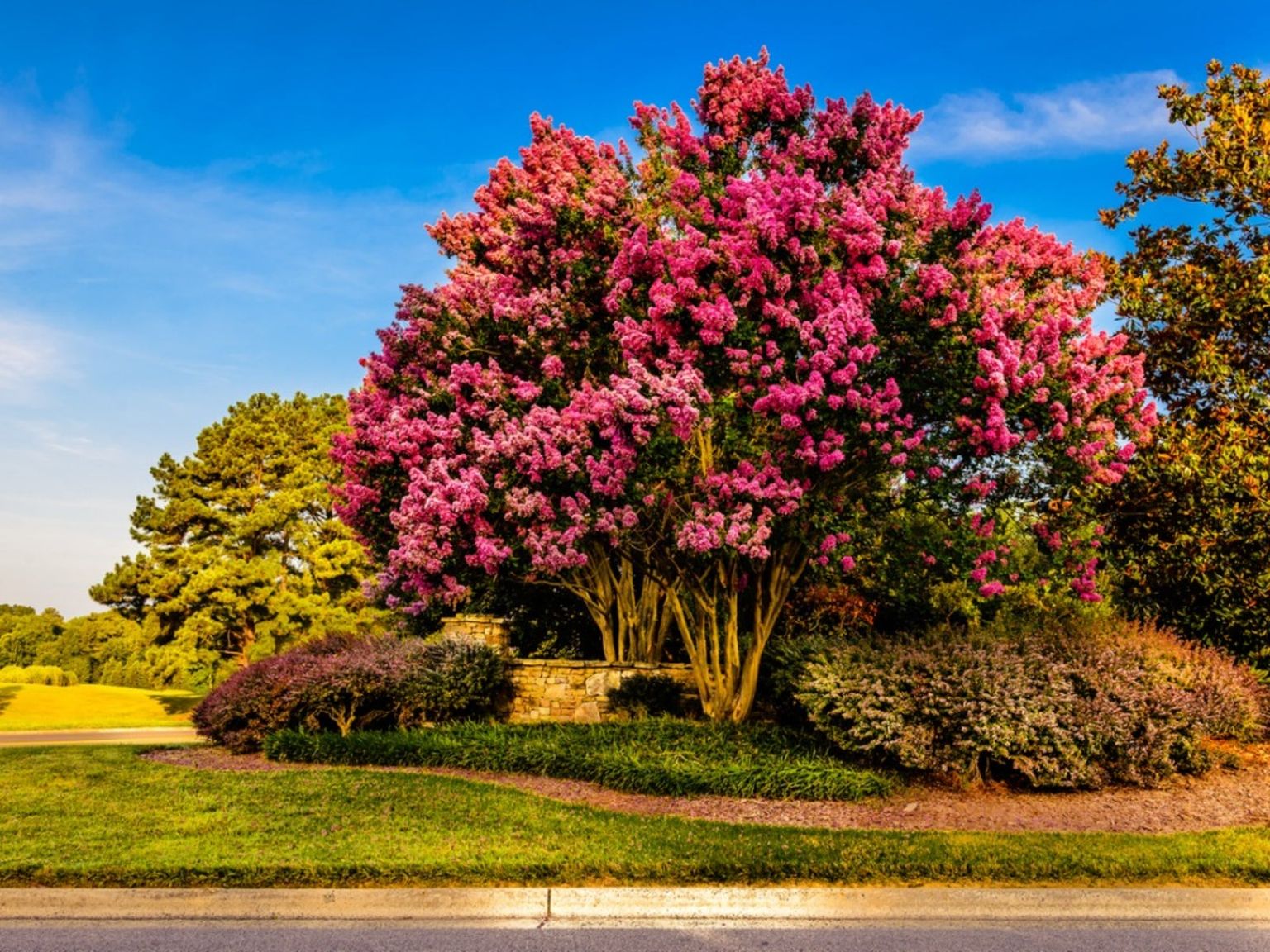
Crepe Myrtle Information Learn About The Lifespan Of Crepe Myrtles
Crape myrtle (or crepe myrtle) trees & bushes provide year-round interest and color with their showy summer flowers, colorful fall foliage and attractive exfoliating bark in winter.

Untitled (With images) Myrtle tree, Pollinator garden design
Soil The Crepe Myrtle tree will thrive in well-draining soil using loamy sand and clay. Keep the soil moist. Crepe Myrtle thrives in acidic to mildly acidic, with a pH of 5.0 to 6.5. Most gardening soil is between pH 6.0 to 7.0. Water The plant needs to be watered once a week to avoid wilting.
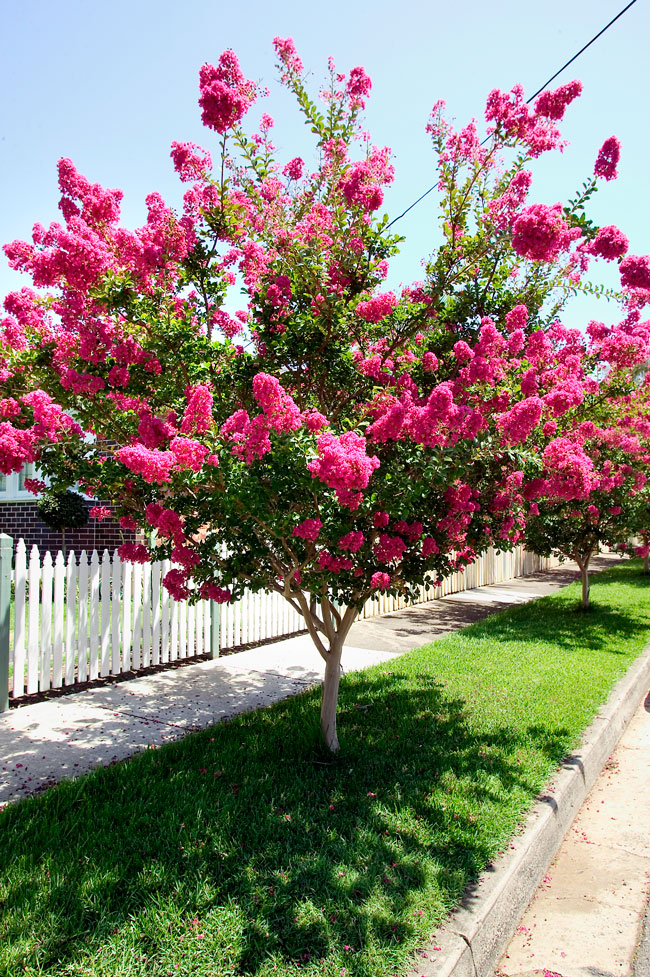
Crepe Myrtle Burke's Backyard
Crape Myrtle Bushes. Crape myrtle bushes are small plants, ideal for growing as foundation plantings or in containers. Usually, crape myrtle bushes only grow a few feet high. For example, the Lagerstroemia indica 'Delta Blush' is a weeping crape myrtle with light pink flowers and grows no taller than 18" (45 cm) high.. Types of Crape Myrtle Trees (With Pictures)
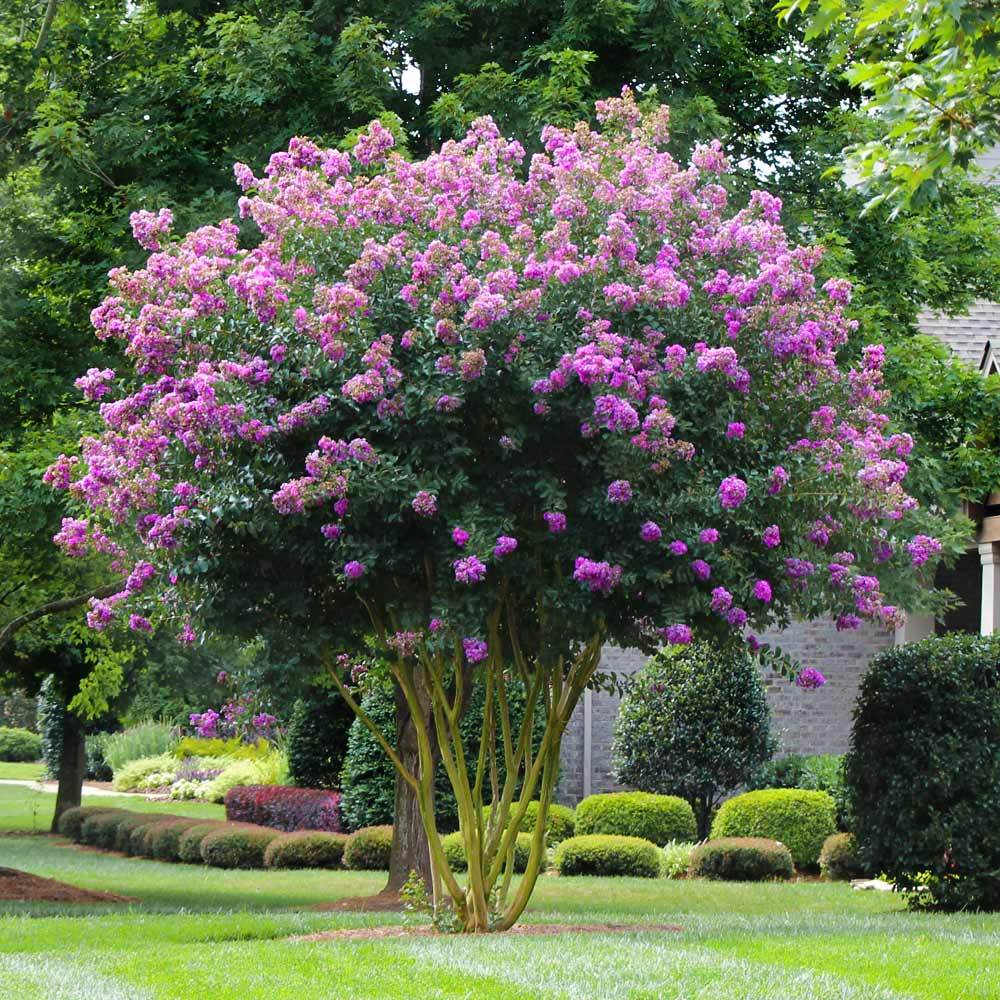
Muskogee Crepe Myrtle LA Landscape Supply
Crape myrtles are wildly popular in the South for good reason. They bloom in the summer, when there are few other trees and shrubs providing that service. The larger varieties grow rather quickly, providing a bit of shade in addition to the seasonal color.
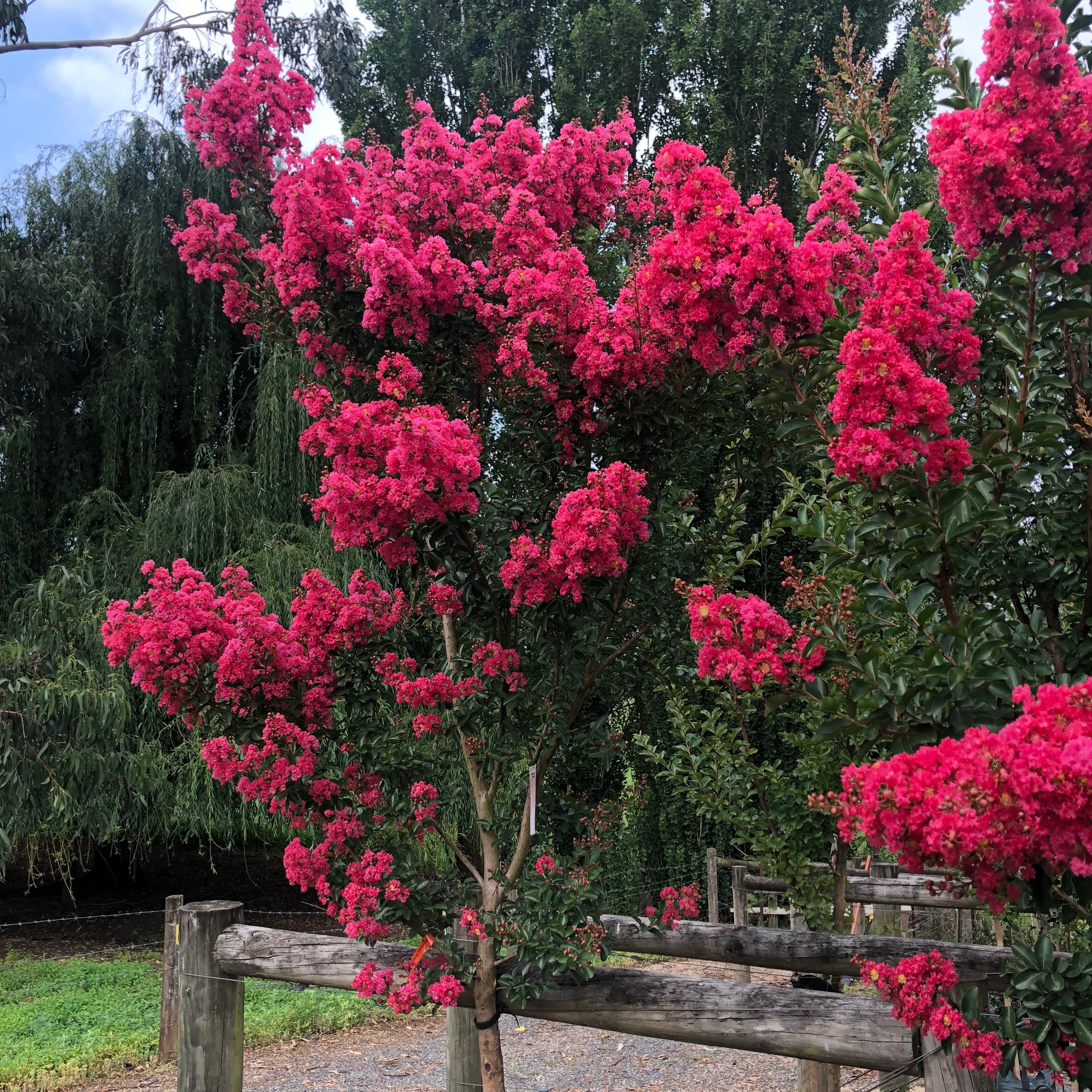
Tuscarora Crepe Myrtle Lagerstroemia indica Blerick Tree Farm
Beloved for their showy summer blooms and multi-season appeal, crape myrtles are an ornamental tree or shrub that thrives in mild climates and sunny landscapes. When properly sited and cared for, these plants can live for decades, lighting up your yard with vibrant, colorful flowers summer after summer.
Colorful Crepe Myrtle Trees are Beautiful to Landscape With
Crepe myrtles—or crape myrtles and crapemyrtles if you prefer—range in size from dwarf selections that grow less than 3 feet tall to several large varieties that reach upwards of 30 feet. Knowing the mature height of a plant before you buy it and planting the proper size for the site will save you much heartache (and backache) in the future.
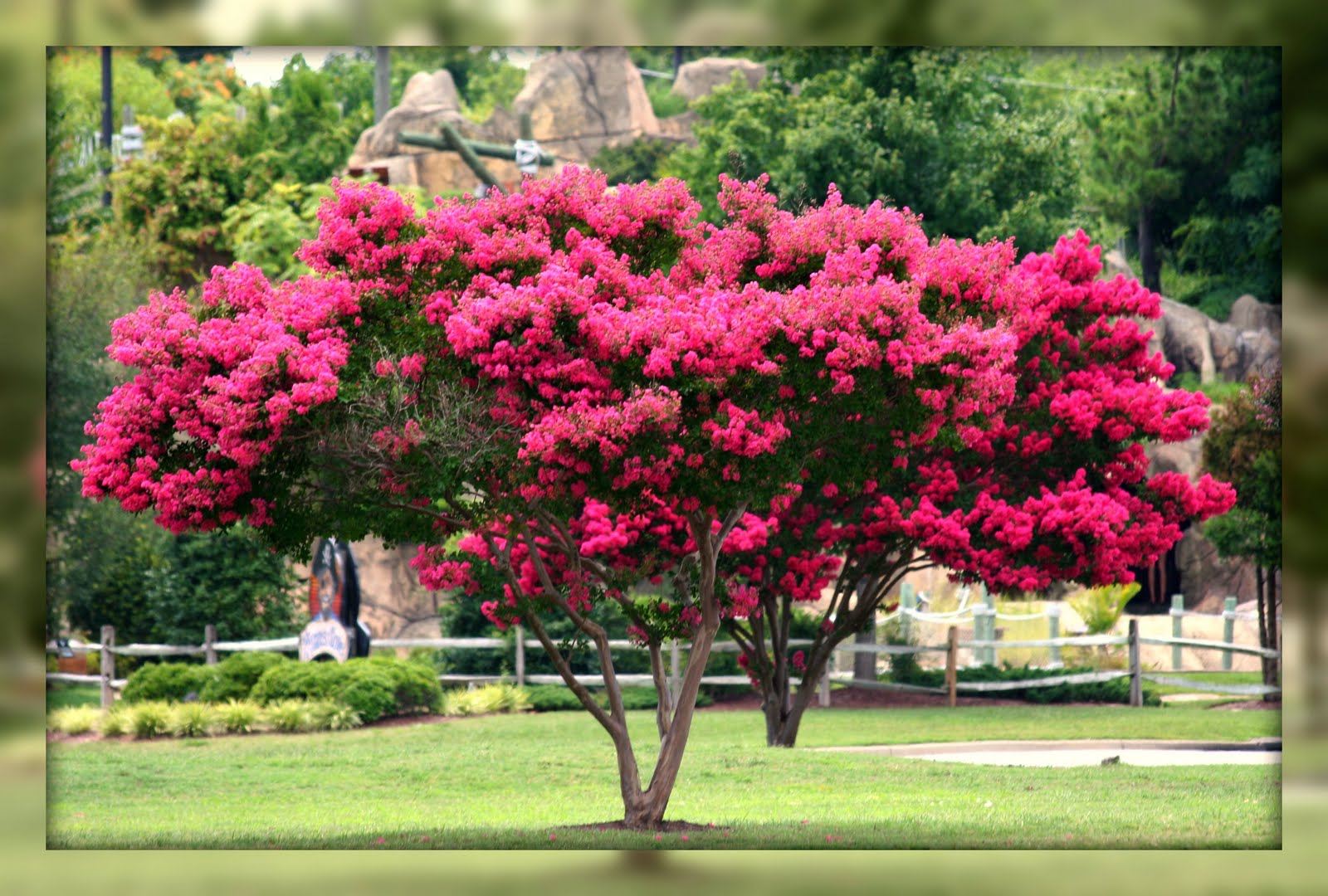
Living In Williamsburg, Virginia Crepe Myrtle Trees In Bloom, Williamsburg, Virginia
Crape myrtle bushes ( Lagerstroemia indica) are attractive varieties of multi-stemmed flowering shrubs with showy red, white, pink or purple flowers. Crape myrtle shrubs flower in summer, turning the large bushes into colorful floral displays that attract birds and pollinators. You can grow ornamental crape myrtle bushes in warm climates.
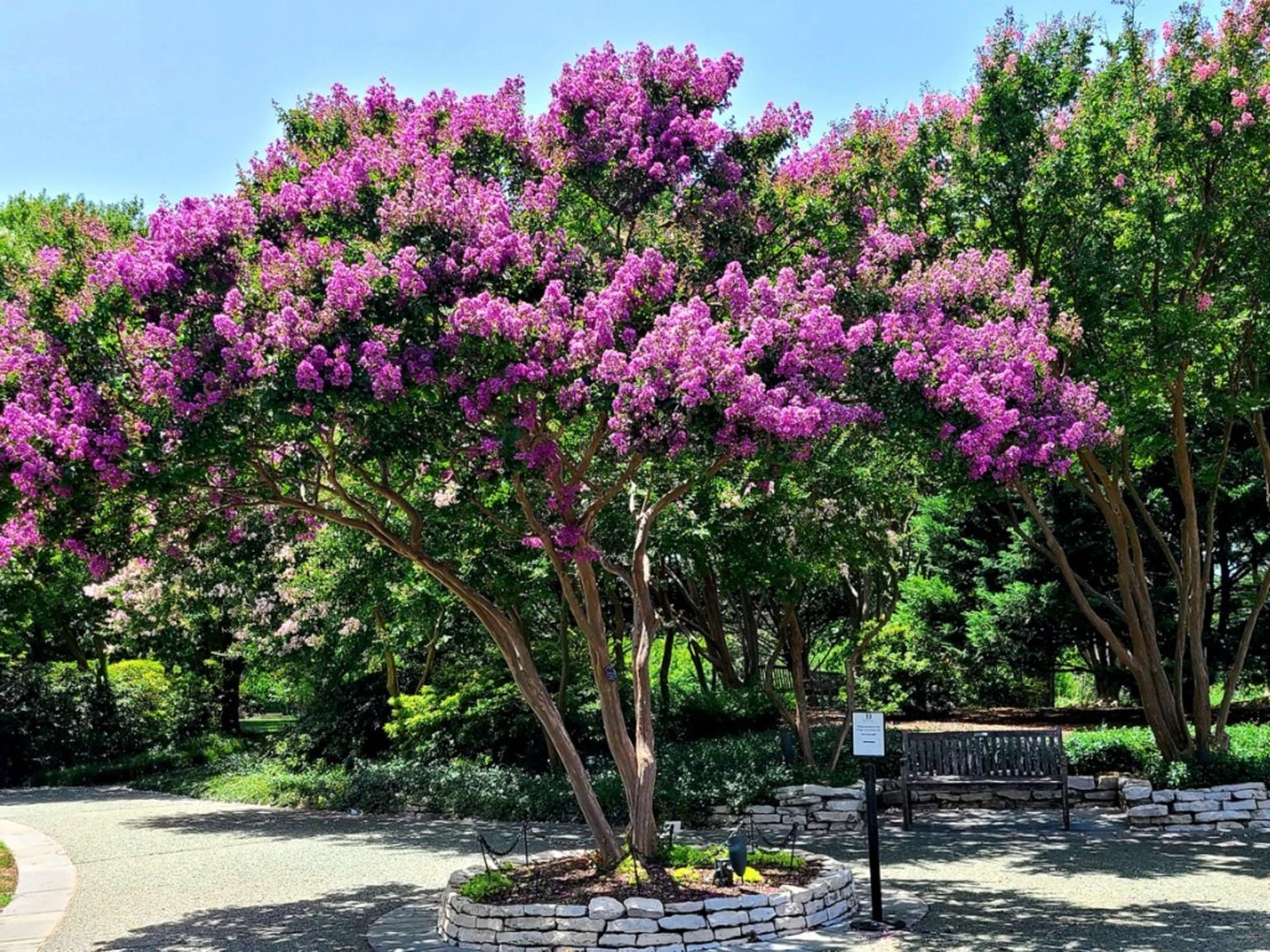
Crape Myrtle Tree Information How To Grow Crape Myrtle
Crepe myrtle plants are spectacular, deciduous, flowering shrubs or small trees providing an impressive summer floral display in areas with hot summers, especially in southern states.
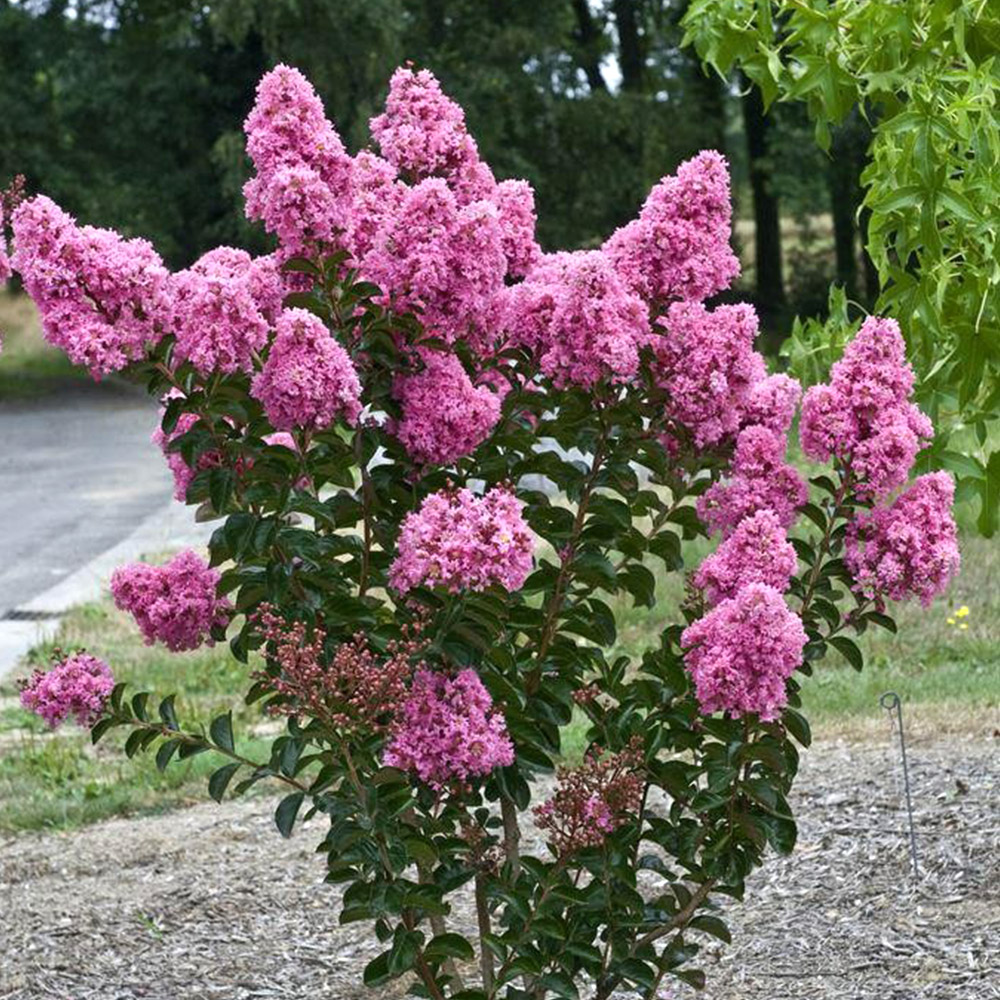
Crape Myrtle (Lagerstroemia indica) Tooth Mountain Nursery
What is a Crape Myrtle? Crape myrtle (or crape myrtle) are summer-flowering trees and shrubs of the Lagerstroemia genus. The genus consists of around 50 species and hundreds of selected cultivars of deciduous trees and shrubs that are cultivated in warm climates.
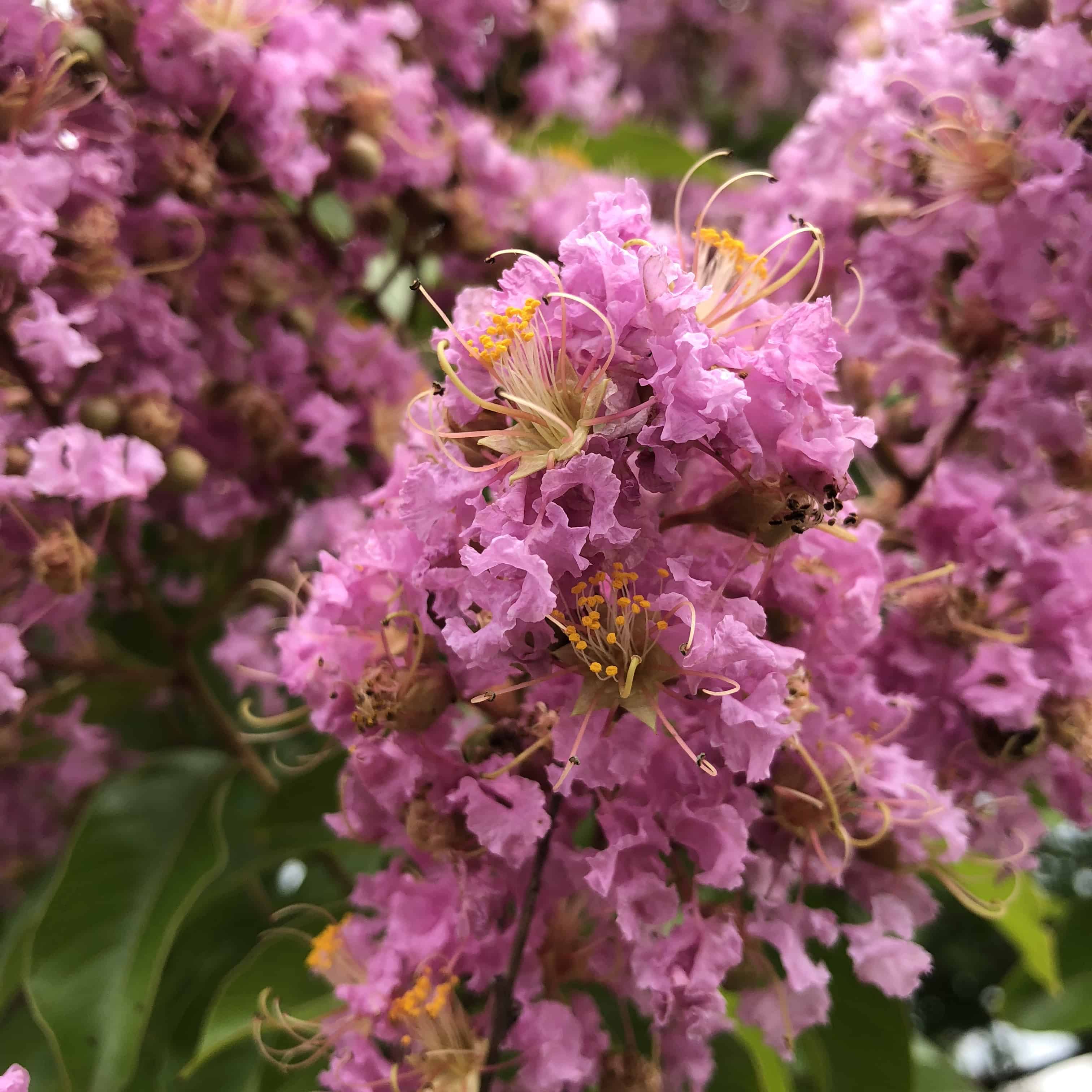
Crepe Myrtle genus Lagerstroemia Types of Trees
Crape Myrtle Dogwood Cherry Crabapple Plum Magnolia Mimosa Redbud View All Shade Trees Beech Birch Elm Ginkgo Japanese Maple Maple Oak Poplar Sycamore Willow View All Fruit Trees Apple Avocado Cherry

Crepe Myrtle Crepe myrtle, Shrubs, Back garden
To grow crepe myrtle, start by planting a crepe myrtle sapling in a sunny outdoor spot in late fall, winter, or early spring. When you plant your crepe myrtle, plant it in a hole that's 3 times as wide as the sapling's root ball. Next, spread a layer of hardwood mulch around the tree to help the soil retain moisture.